
FOMC Forex: How Federal Reserve Decisions Influence Currency Markets
Table of Contents
ToggleNavigating the Labyrinth: Understanding the FOMC’s Impact on Forex Markets
Welcome to a journey deep into the heart of global finance, specifically focusing on the intricate relationship between the US Federal Reserve’s monetary policy decisions and the dynamic world of Forex trading. For both aspiring investors taking their first steps and seasoned traders seeking to refine their strategies, understanding how the Federal Open Market Committee (FOMC) influences currency markets is not just beneficial – it’s essential. Think of the Fed as the maestro of a vast economic orchestra, and the Forex market as one of its most sensitive instruments, reacting instantly to the conductor’s every cue. We’re here to help you decipher those cues.
In the realm of technical analysis, chart patterns and indicators are your compass, guiding you through price movements. But fundamental analysis, particularly central bank actions like those from the FOMC, provides the map – the underlying context that often dictates the larger trend. Ignoring the map while relying solely on the compass can lead you astray. Our mission is to provide you with that map, explaining complex concepts with clarity and practical relevance, so you can navigate the Forex market with greater confidence and expertise.
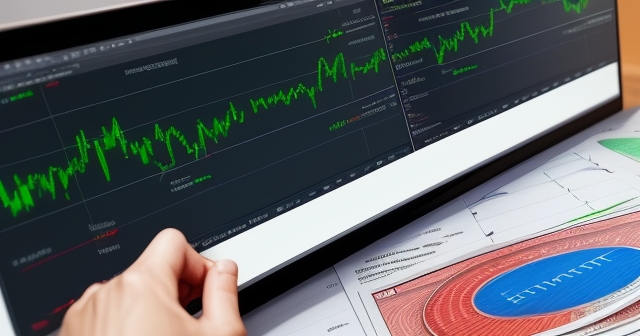
The analysis of the Forex market can be influenced by various factors, such as:
- Monetary policy decisions from the central bank
- Economic indicators and data releases
- Geopolitical events and market sentiment
| Influence Factor | Description |
|---|---|
| Monetary Policy | Decisions made by the FOMC regarding interest rates. |
| Economic Indicators | Reports like GDP, inflation, and employment statistics. |
| Geopolitical Events | International tensions or agreements affecting market sentiment. |
The Federal Reserve and Its Rate-Setting Arm: The FOMC Explained
Before we delve into the impact, let’s establish a foundational understanding of who we’re talking about. The Federal Reserve, often simply called the Fed, is the central banking system of the United States. Established by Congress, it plays a critical role in governing the nation’s monetary policy.
Within the Fed structure, the Federal Open Market Committee (FOMC) is the key decision-making body for monetary policy. This committee is responsible for setting the direction of open market operations – primarily influencing the federal funds rate, which is the target rate banks charge each other for overnight lending. Why is this rate so important? Because it serves as the benchmark for many other interest rates in the economy, from mortgages and car loans to business credit and, critically, the return on assets denominated in US Dollars.
The FOMC consists of twelve members: the seven members of the Board of Governors, the president of the Federal Reserve Bank of New York, and four other Reserve Bank presidents who serve one-year terms on a rotating basis. This composition brings diverse regional perspectives to the table, although the governors and the New York Fed president hold permanent voting seats, lending consistency to the core of the committee.
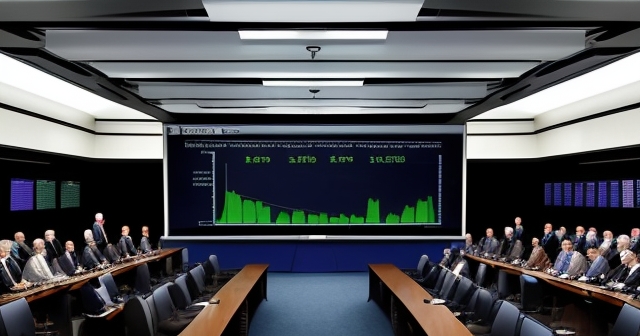
The Fed’s Dual Mandate: A Balancing Act
What guides the FOMC’s decisions? The Fed operates under a dual mandate set by Congress: to promote effectively the goals of maximum employment, stable prices, and moderate long-term interest rates. While all three are interconnected, “stable prices” is typically interpreted as controlling inflation, often targeting a 2% annual rate for personal consumption expenditures (PCE) inflation. “Maximum employment” is a more fluid concept, representing the highest level of employment the economy can sustain without triggering excessive inflation.
This dual mandate presents a constant balancing act. When the economy is booming and inflation is rising, the Fed may need to tighten monetary policy (usually by raising interest rates) to cool things down and prevent the economy from overheating, even if it risks slightly higher unemployment. Conversely, during economic downturns or periods of low inflation, the Fed might ease policy (lower rates) to stimulate growth and boost employment, even if it carries a potential, albeit distant, risk of future inflation.
For years, the challenge was often stimulating inflation and achieving full employment. More recently, the primary challenge has been bringing elevated inflation back down to the 2% target without causing significant harm to the labor market. This tension is at the core of current FOMC deliberations and directly impacts their rate decisions.
| Measurement | Goal |
|---|---|
| Inflation Rate | 2% target for PCE inflation. |
| Employment Level | Maximum employment without triggering inflation. |
| Interest Rates | Moderate long-term interest rates. |
The Recent FOMC Decision and the Extended Pause
Let’s turn our attention to the present and the recent actions of the FOMC, drawing insights from the provided data. As you may know, the Federal Reserve recently concluded its latest monetary policy meeting. The outcome, consistent with market expectations for the past several meetings, was a decision to maintain the target range for the federal funds rate at 5.25% to 5.5%.
What’s particularly noteworthy about this decision is that it marks the seventh consecutive meeting where the FOMC has chosen to hold rates steady. This prolonged pause signifies a shift from the aggressive rate-hiking cycle that characterized 2022 and much of 2023. It indicates a cautious stance, a period of observation as policymakers assess the cumulative effects of previous tightenings and the evolving economic landscape.
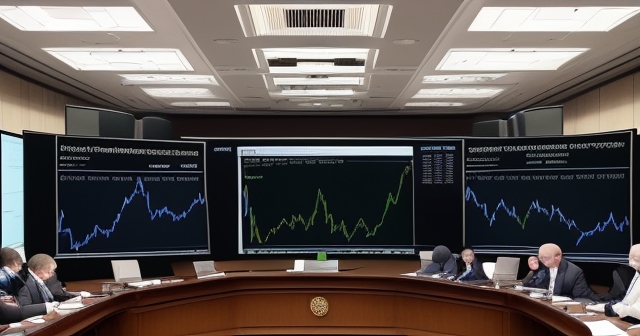
Holding rates unchanged doesn’t mean inaction; it’s a deliberate choice based on the committee’s assessment of current economic conditions and future risks. It tells us that the Fed believes the current level of restrictiveness is appropriate *for now* to continue pressuring inflation downwards, but that they are not yet confident enough to begin easing policy by cutting rates. The emphasis remains firmly on achieving greater confidence that inflation is sustainably moving towards their 2% goal.
Deeper Dive: Insights from the FOMC Minutes
While the rate decision itself grabs headlines, the true depth of the FOMC’s thinking is revealed in the minutes from their meetings, typically released three weeks later. These minutes are invaluable for traders and analysts because they provide a detailed account of the economic and financial conditions discussed, the nuances of individual policymakers’ views, and the rationale behind the policy vote.
The provided data highlights a key takeaway from recent minutes: significant uncertainty surrounding the persistence of elevated inflation. Policymakers are grappling with whether recent improvements in inflation data represent a clear trend or temporary fluctuations. This uncertainty naturally leads to caution.
Furthermore, the minutes reveal an ongoing internal debate over policy risks. Committee members are weighing the potential dangers of two opposing errors:
1. Easing monetary policy prematurely: Cutting rates too soon could reignite inflationary pressures, forcing the Fed to potentially hike rates again later, which could be disruptive and damage credibility.
2. Keeping policy overly restrictive for too long: Maintaining high interest rates for an extended period could unnecessarily slow down the economy, potentially leading to a significant rise in unemployment or even a recession.
This debate underscores the difficulty of the Fed’s task and explains the current ‘wait-and-see’ approach. The minutes show that while some members might be leaning towards needing fewer rate cuts or even considering hikes if conditions worsen, others are mindful of the risks to employment if rates stay high for too long. Understanding the spectrum of views within the committee, as detailed in the minutes, provides crucial context for anticipating future policy shifts and their potential impact on the Forex market.
Peering into the Future: The Summary of Economic Projections (SEP) or ‘Dot Plot’
Another critical piece of information released quarterly alongside the FOMC’s rate decision is the Summary of Economic Projections (SEP), widely known as the ‘dot plot’. This document provides anonymous forecasts from each FOMC participant for key economic variables, including GDP growth, unemployment, inflation, and, most importantly for currency traders, the appropriate level of the federal funds rate at the end of the current year and subsequent years.
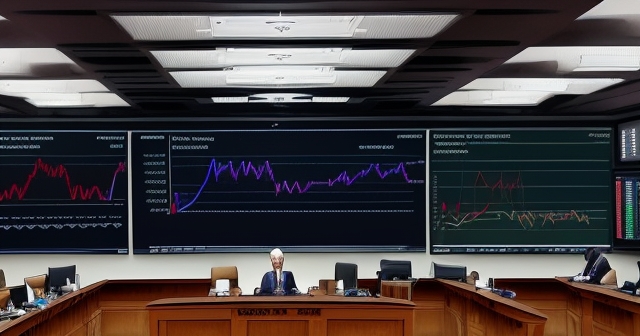
Imagine the dot plot as a collection of individual forecasts, each represented by a dot on a graph. The distribution of these dots offers a visual representation of policymakers’ collective expectations for future interest rates. If the dots are clustered lower in future years, it suggests a consensus for rate cuts. If they are higher, it signals expectations for fewer cuts or potentially even hikes.
While the dot plot isn’t a formal policy commitment, it provides invaluable insight into the committee’s forward-looking stance. A shift in the median dot – the midpoint of all forecasts – can significantly impact market expectations for rate cuts or hikes, leading to volatility in bond yields and, consequently, the US Dollar in the Forex market. For instance, if the median dot shifts higher for the current year, markets might price in fewer rate cuts than previously anticipated, which is generally supportive of the USD.
The Direct Link: How FOMC Decisions Shape the US Dollar
Now, let’s connect the dots (pun intended!) to the Forex market. The US Dollar (USD) is the most traded currency in the world, involved in nearly 90% of all Forex transactions. Its value is profoundly affected by the Federal Reserve’s monetary policy decisions, primarily through interest rates.
Here’s the fundamental principle:
* Higher Interest Rates (or expectation of higher rates): When the Fed raises interest rates or signals that rates will remain high, it makes assets denominated in US Dollars (like US Treasury bonds) more attractive to foreign investors seeking higher yields. Increased demand for USD assets translates into increased demand for the US Dollar itself, generally leading to a bullish or strengthening effect on the USD.
* Lower Interest Rates (or expectation of lower rates): Conversely, when the Fed cuts interest rates or signals future cuts, the yield advantage of USD assets decreases. This can reduce foreign investor demand for USD assets, leading to decreased demand for the US Dollar and a potentially bearish or weakening effect on the USD.
When the FOMC holds rates unchanged, as they have been, the market’s focus immediately shifts to the nuances of the accompanying statement, the SEP, and Chairman Powell’s press conference. Is the language more ‘hawkish’ (suggesting a bias towards higher rates or fewer cuts) or ‘dovish’ (suggesting a bias towards lower rates or more cuts)? Even subtle changes in wording can cause significant market reactions as traders re-evaluate the *future* path of rates.
Navigating the Forex Market: Impact on Major Currency Pairs (EUR/USD, GBP/USD)
The impact of FOMC decisions isn’t limited to the US Dollar in isolation; it’s most visible in how the USD performs against other currencies in major pairs. Let’s look at EUR/USD and GBP/USD as key examples.
The value of a currency pair is determined by the relative strength of the two currencies involved. Therefore, EUR/USD is influenced by both the Fed’s policy (impacting USD) and the European Central Bank’s (ECB) policy (impacting EUR). Similarly, GBP/USD is influenced by the Fed and the Bank of England’s (BoE) policy.
When the Fed’s stance becomes more hawkish (implying higher or sustained high US rates), the USD tends to strengthen. If, at the same time, the ECB or BoE are perceived as more dovish (leaning towards rate cuts), this creates a policy divergence. The yield differential widens in favor of the USD, making the USD relatively more attractive than the EUR or GBP. This scenario typically leads to a decline in EUR/USD and GBP/USD (as it takes fewer US Dollars to buy one Euro or one British Pound).
| Currency Pair | Influencing Factors |
|---|---|
| EUR/USD | Fed’s hawkish stance vs ECB’s dovish outlook. |
| GBP/USD | Comparative policy stance of the BoE and Fed. |
Conversely, if the Fed becomes more dovish (signaling impending rate cuts), and the ECB or BoE maintain a relatively tighter stance or are slower to cut, the policy divergence narrows or even reverses. The USD becomes relatively less attractive, potentially leading to an increase in EUR/USD and GBP/USD.
The recent data suggests that EUR/USD and GBP/USD have experienced declines, attributed partly to US Dollar strength. This implies that the market views the Fed’s current ‘hold’ stance and potential future path as relatively more hawkish, or other factors are weighing on the Euro and Pound (such as political uncertainty in the EU or UK), combining to bolster the USD’s value in these pairs.
It’s also worth noting that global risk sentiment plays a role. When there is market uncertainty or risk aversion, investors often flock to the US Dollar as a perceived safe-haven asset. This can amplify the USD’s strength, even if the Fed’s policy hasn’t changed dramatically. Combining Fed policy analysis with an understanding of global risk sentiment is crucial for Forex traders.
Understanding these market dynamics is crucial, and having the right tools to react swiftly to FOMC announcements is paramount. If you’re evaluating trading platforms, especially for volatile news events like the FOMC, consider platforms known for their speed and reliability.
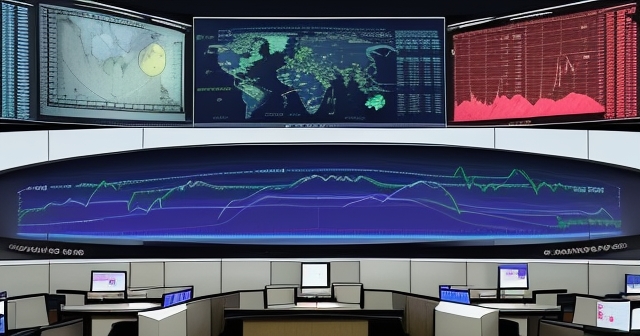
If you’re considering starting Forex trading or exploring more CFD instruments, Moneta Markets is a platform worth considering. Hailing from Australia, it offers over 1000 financial instruments, suitable for both novice and professional traders.
Data Dependency: Why Economic Reports Matter to the Fed and Forex
We’ve emphasized that the Fed’s future policy is highly data-dependent. What does this mean in practice? It means that upcoming interest rate decisions are not predetermined; they rely heavily on the incoming stream of economic data.
Which data points are most important? The Fed pays particularly close attention to indicators related to its dual mandate:
* Inflation Data: Reports like the Consumer Price Index (CPI) and the Personal Consumption Expenditures (PCE) price index are critical barometers of price stability. If inflation remains stubbornly high or reaccelerates, it reduces the likelihood of rate cuts. If it shows consistent progress towards 2%, it increases the probability of easing.
* Labor Market Data: Reports like the Non-Farm Payrolls (Jobs Report) and the Unemployment Rate provide insights into the ‘maximum employment’ side of the mandate. A strong labor market with low unemployment might give the Fed more leeway to keep rates high to fight inflation. A weakening labor market (rising unemployment, slowing job growth) could pressure the Fed to cut rates to support employment, even if inflation isn’t perfectly at target.
Other data, such as retail sales, manufacturing indices (like the PMI), and consumer sentiment surveys, are also monitored as they paint a broader picture of economic health and momentum.
| Data Point | Importance |
|---|---|
| CPI | Measures inflation and price stability. |
| Non-Farm Payrolls | Indicates employment levels and economic strength. |
| PMI | Assesses manufacturing and economic momentum. |
For Forex traders, this data dependency turns every major US economic data release into a potential market-moving event. A surprisingly strong jobs report or a higher-than-expected CPI print can lead to a sudden appreciation of the US Dollar as traders anticipate the Fed will either delay cuts or even consider hikes. Conversely, weak data can trigger USD selling as rate cut expectations increase.
This is why the economic calendar is a Forex trader’s best friend. Understanding the potential impact of scheduled data releases allows you to anticipate periods of volatility and potential trend shifts, preparing your trading strategies accordingly.
External Risks and the Policy Framework Review
While internal economic conditions are paramount, the Fed also considers potential external factors that could influence its ability to achieve its mandate. The provided data mentions something particularly interesting: the potential for future political policies, such as tariffs, to pose an upside risk to the inflation outlook.
Tariffs, essentially taxes on imported goods, can directly increase the cost of those goods for consumers and businesses, contributing to higher inflation. If the Fed anticipates that such policies might be enacted, it could influence their inflation forecasts and, consequently, their willingness to cut rates or even necessitate a more restrictive stance to counteract those inflationary pressures.
This highlights how monetary policy isn’t made in a vacuum. Geopolitical events, trade policies, and even domestic political developments can enter the Fed’s risk assessment and impact their decisions. Being aware of these broader factors is part of developing a holistic understanding of the forces shaping the Forex market.
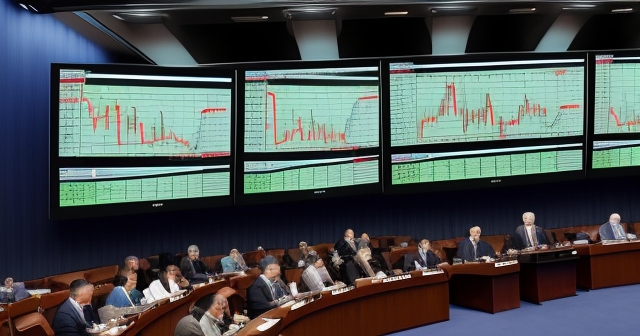
Furthermore, the FOMC periodically engages in a comprehensive review of its monetary policy framework. While the 2% inflation target has been reaffirmed, these reviews can explore how the Fed approaches its goals, particularly in challenging economic environments. Discussions around whether the 2% target should be an average over time (allowing for periods above 2% to compensate for periods below) or a strict ceiling can influence market expectations about the Fed’s reaction function and policy path.
Comparing the Fed with Other Global Central Banks
The Forex market is a global marketplace, meaning that the Fed’s actions don’t exist in isolation. The policies of other major central banks, such as the European Central Bank (ECB), the Bank of England (BoE), the Bank of Japan (BoJ), the Reserve Bank of Australia (RBA), the Swiss National Bank (SNB), and others, are equally important. It’s the *relative* stance between central banks that drives currency movements.
For example, if the Fed holds rates steady but the ECB explicitly signals rate cuts are coming soon (as some have), this divergence in policy outlook makes the USD relatively more attractive than the EUR, pushing EUR/USD lower. If the BoE sounds more concerned about inflation than the Fed, suggesting they might keep rates higher for longer, this could support GBP against USD, causing GBP/USD to rise.
The provided data mentions recent policy meetings from central banks like the RBA, SNB, and BoE. While the focus of our discussion is the FOMC, remember that simultaneous policy decisions or shifts in outlook from these central banks contribute to the overall dynamics of currency pairs involving the USD (like AUD/USD, USD/CHF, GBP/USD).
Analyzing the global central bank landscape involves:
- Identifying which stage of the policy cycle each bank is in (hiking, pausing, cutting).
- Understanding their economic outlook (inflation, growth, employment).
- Assessing their forward guidance (what they signal about future actions).
Comparing these factors across different central banks helps you understand potential policy divergence and its implications for specific currency pairs. The US Dollar’s strength isn’t just about the Fed; it’s also about the relative weakness or strength of the policies and economies of other major currency regions.
For those looking to trade global currencies and respond to these diverging policies, having access to a wide range of instruments and reliable market data is key. Choosing a broker that provides competitive conditions across multiple pairs is essential.
In choosing a trading platform, the flexibility and technical advantages of Moneta Markets are worth noting. It supports major platforms like MT4, MT5, and Pro Trader, combining high-speed execution with low spread settings to provide a solid trading experience.
Strategies for Trading FOMC Events
Given the significant market volatility that often accompanies FOMC announcements, how can traders approach these events? Here are a few strategies to consider, keeping in mind that trading news events carries a high degree of risk:
- The “Wait and See” Approach: Many traders choose to wait until the initial volatility subsides and the market has had time to digest the information. They look for confirmation of a new trend direction after the dust settles, trading the established post-announcement move rather than trying to predict the immediate reaction. This approach prioritizes clarity over attempting to capture the first, often erratic, price swings.
- Trading the Release: This is a high-risk, high-reward strategy that involves placing trades immediately upon the release of the FOMC statement, SEP, or during Chairman Powell’s press conference. Requires a deep understanding of potential outcomes, fast execution, and robust risk management (tight stop-losses are crucial). Traders might use tools like pending orders placed just above/below pre-release price levels to try and capture a breakout move.
- Trading Expectations vs. Reality: Markets often price in expectations *before* the event. If the actual announcement aligns with expectations, the market reaction might be muted. If there’s a significant divergence (e.g., market expected a dovish tone, but the Fed sounded hawkish), the reaction can be violent as positions based on old expectations are rapidly unwound. Traders using this strategy analyze pre-release market expectations and position themselves to profit from a surprise.
- Focusing on Key Details: Instead of just trading the rate decision (which is often anticipated), focus on the nuanced language in the statement, changes in the SEP dots, and Chairman Powell’s commentary during the press conference. These are where unexpected hawkish or dovish shifts are most likely to appear and drive sustained moves.
Regardless of the strategy, robust risk management is paramount. Volatility can lead to wider-than-usual spreads and slippage, potentially executing stop-losses at less favorable prices. Never risk more capital than you can afford to lose, and always understand the specific risks associated with trading during major news events.
For those seeking a reliable broker for global trading that can handle such events, finding one with strong regulatory oversight is key. Moneta Markets holds multi-country regulatory certifications, including FSCA, ASIC, and FSA, providing trusted fund custody and comprehensive support like free VPS and 24/7 Chinese customer service, making it a preferred choice for many traders.
Conclusion: Staying Informed in a Dynamic Market
The Federal Reserve and its rate-setting FOMC wield immense power over the US Dollar and, by extension, the global Forex market. Their decisions on interest rates, guided by the dual mandate of price stability and maximum employment, are dissected by traders worldwide for clues about future currency movements.
The current period, characterized by a prolonged pause in rate adjustments amid persistent inflation uncertainty and an internal debate on policy risks, demands careful analysis. The FOMC statement, minutes, and the ‘dot plot’ provide the essential breadcrumbs that help us understand the committee’s thinking and anticipate potential future actions.
Remember, the Forex market is forward-looking. It’s not just the current rate that matters, but the market’s expectation of *where rates will be* in the future. This makes every piece of communication from the Fed, and every major economic data release that influences the Fed’s outlook, a crucial event for traders.
By understanding the Fed’s objectives, the factors they prioritize (especially inflation and employment data), the nuances in their communication, and the dynamics of policy divergence with other central banks, you equip yourself with the fundamental knowledge needed to navigate the Forex market more effectively. Stay informed, analyze diligently, and combine this fundamental understanding with your technical analysis to build a comprehensive trading approach in this ever-evolving financial landscape.
fomc forexFAQ
Q:How does the FOMC affect Forex trading?
A:The FOMC influences Forex trading through its monetary policy decisions that affect interest rates, impacting the strength of the US Dollar.
Q:What are the key indicators the FOMC considers?
A:The key indicators include inflation rates, employment data, and overall economic growth metrics.
Q:Why is understanding the FOMC important for Forex traders?
A:Understanding the FOMC helps traders anticipate currency movements based on expected changes in monetary policy and economic conditions.
You may also like
Calendar
| 一 | 二 | 三 | 四 | 五 | 六 | 日 |
|---|---|---|---|---|---|---|
| 1 | 2 | 3 | 4 | 5 | 6 | 7 |
| 8 | 9 | 10 | 11 | 12 | 13 | 14 |
| 15 | 16 | 17 | 18 | 19 | 20 | 21 |
| 22 | 23 | 24 | 25 | 26 | 27 | 28 |
| 29 | 30 | 31 | ||||
發佈留言
很抱歉,必須登入網站才能發佈留言。